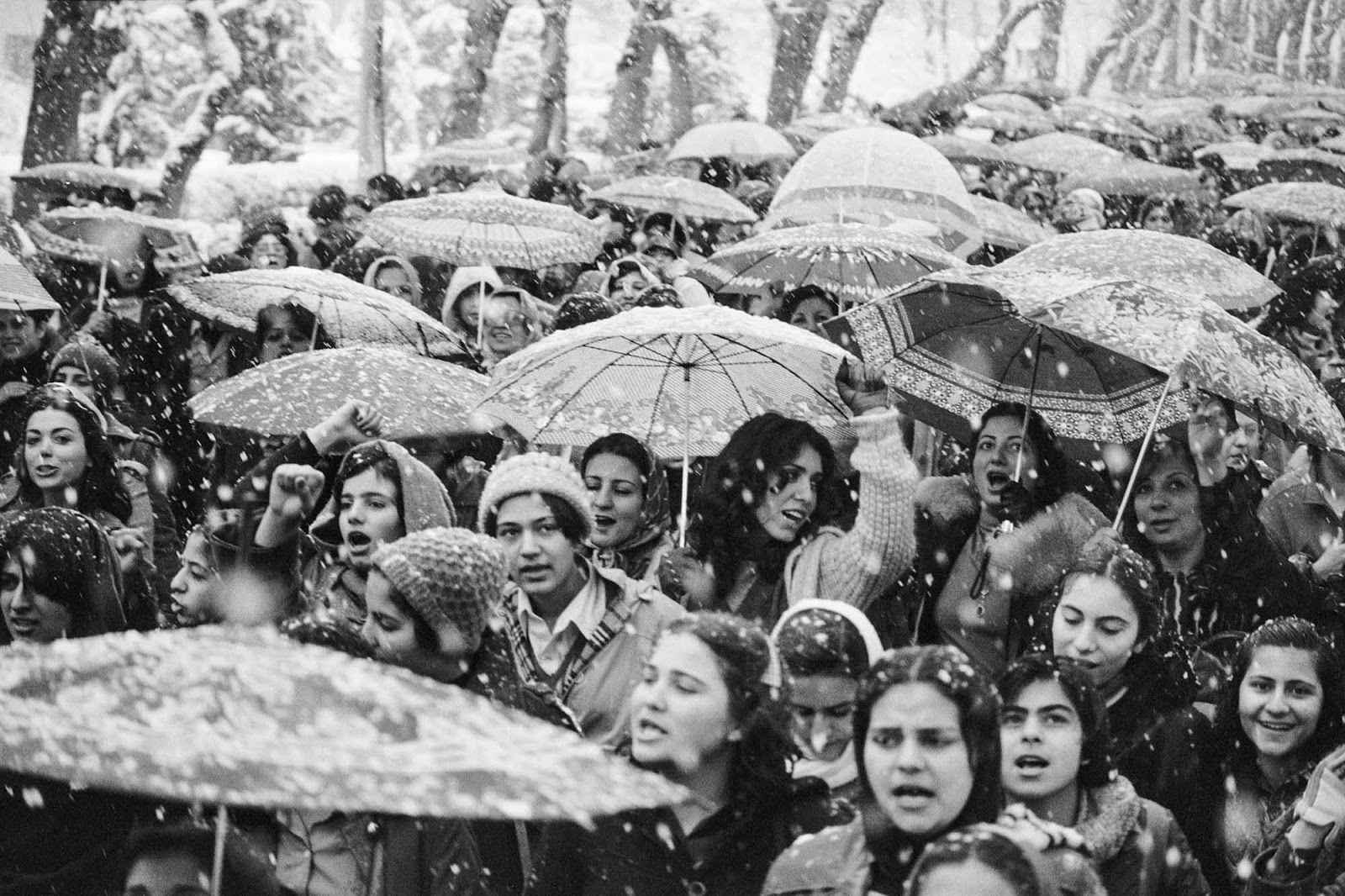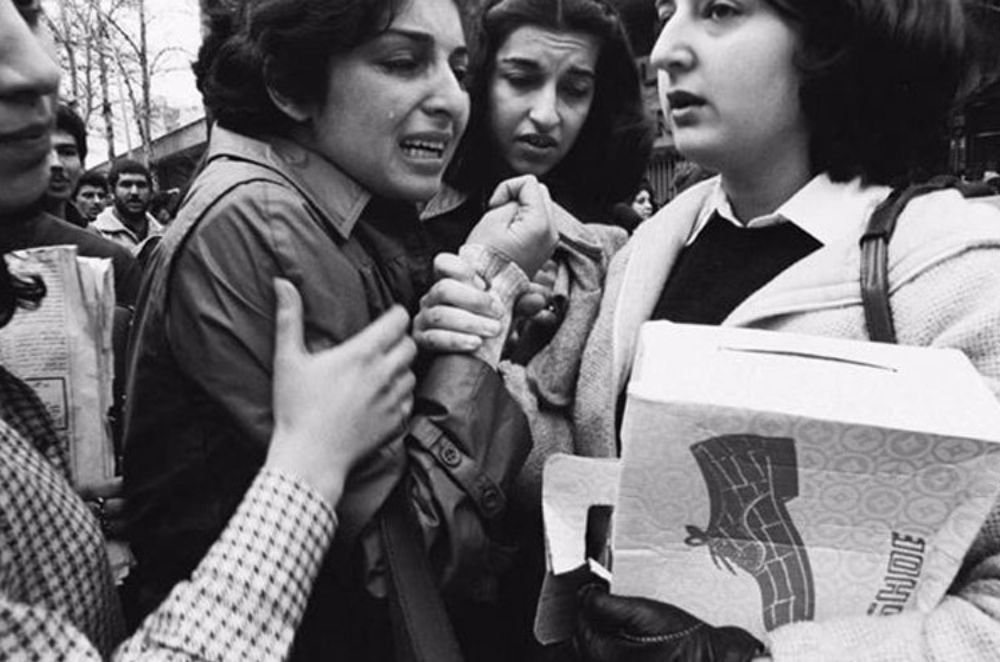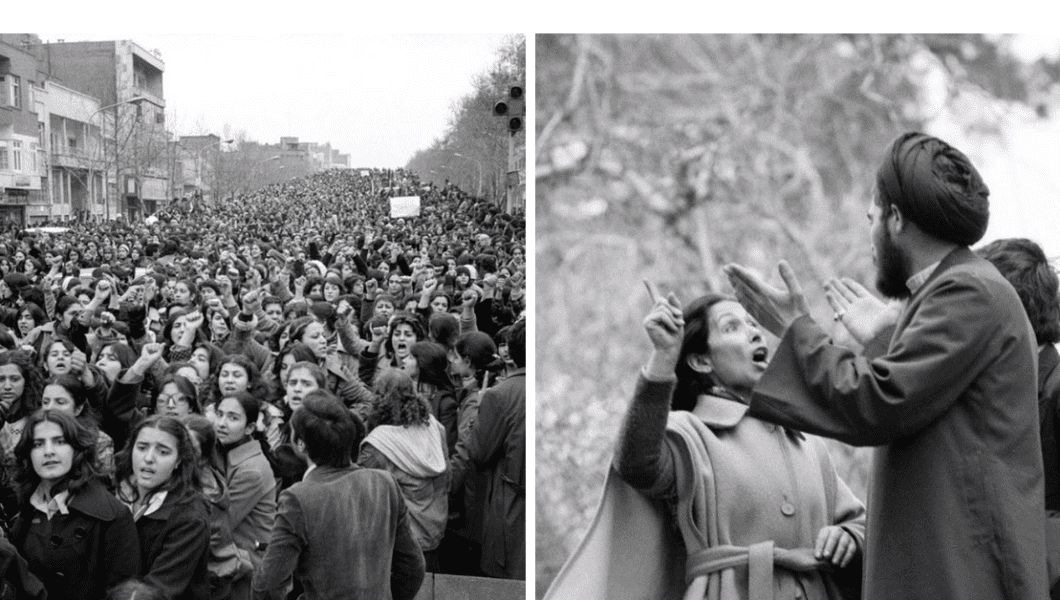
More than 100,000 women assembled in the streets of the Iranian capital on March 8, 1979, to oppose the mandatory hijab ruling of the new Islamic government, effectively mandating women to wear a headscarf whenever away from home.
On International Women’s Day, the photographs show women from all walks of life — nurses, students, moms — marching, smiling, arms raised in protest.
Ayatollah Khomeini sharply restricted liberties women had grown used to under the shah in the Islamic Republic of Iran. The 1967 Family Protection Law was revoked months after the Islamic Republic of Iran came into being.
Women were banned from becoming judges; beaches and sports were sex-segregated; the legal age of marriage for girls was lowered to 9 (later raised to 13); and married women were prevented from attending regular schools. Female government workers were obliged to follow Islamic dress code.
Women started opposing these laws almost right away. Particularly dedicated to the division of the sexes, the Islamic revolution is intellectually committed to inequality for women in inheritance and other spheres of the civil law. Many locations, ranging from “schoolrooms to ski slopes to public buses,” are clearly divided.

In Iran today, the hijab consists of the option of a chador or a roopoosh and veil. Usually black or gloomy, the chador is a somewhat modest garment covering the top of a woman’s head and sloppily covering her body to her feet.
Long top akin to a trench coat is the roopoosh, or manteau. “The dress needs to be appropriate according to the Islamic custom of hijab (veil): women are not required to be veiled in front of mahramrelatives such husband, father, son, brother, but are required to be “modest,” if they are likely to be seen by na-mahram males”.
Bad hijab: Anybody else than hands and face is liable for punishment of up to 70 lashes or 60 days in jail.
Under supervision by Supreme Leader Ali Khamenei, the Tehran police started the most severe crackdown on what is known as “bad hijab” in more than ten years in April 2007.
Tehran, the capital, saw hundreds of Iranian women jailed and thousands advised over their inadequate Islamic attire.


![The spontaneous uprising of both women and men on March 8, 1979, was an effort “to protect the achievements of women’s right in the [preceding] 70 years of Iranian history](https://4.bp.blogspot.com/-GToW5oO-Eok/V_NBlFeiNzI/AAAAAAAALVE/vhFo7UG4IsU5Gr5tZzGiRqHSQs0I-BytACLcB/s1600/women_protesting_hijab_iran_3.jpg)





(Photo credit: Hengameh Golestan).








No Comments